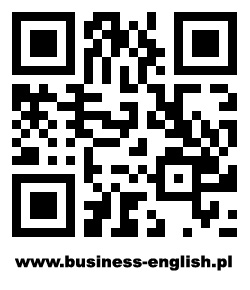The Question in Question, or the Smartest Silliest Questions in Modern Job Interviews
 As anyone who has been looking for work in the last decade can attest, the job interview is the most important part of recruitment process. CVs, cover letters, great portfolio and test scores are no longer as significant as they used to be. The form of the interview has also changed. Instead of the usual „where do you see yourself in 5 years?”, an interviewer may pose some really odd questions, like „why is the Earth round?” and gauge your response in terms of creativity, analytical thinking and cultural fit. But is it an actual question, or simply a new type of competence test, better fitting the era of Tweets and five-second Vine sales pitches? Read on if you want to prepare yourself for the inevitable „weird” question your next recruiter will throw your way.
As anyone who has been looking for work in the last decade can attest, the job interview is the most important part of recruitment process. CVs, cover letters, great portfolio and test scores are no longer as significant as they used to be. The form of the interview has also changed. Instead of the usual „where do you see yourself in 5 years?”, an interviewer may pose some really odd questions, like „why is the Earth round?” and gauge your response in terms of creativity, analytical thinking and cultural fit. But is it an actual question, or simply a new type of competence test, better fitting the era of Tweets and five-second Vine sales pitches? Read on if you want to prepare yourself for the inevitable „weird” question your next recruiter will throw your way.
Start-ups and media giants, online retailers and even coffee chains are now hiring people in a very different way than back in the 2000s. They tend to value the way candidates think and solve problems much more than their qualifications, expertise in the field or actual skills. This approach likely emulates the way the likes of Google or Amazon grew their talent base: they became so innovative in their respective fields, they no longer occupied a single market niche or even worked in the same industry from one day to the next. Likewise, they couldn’t hire people for fixed, multi-year tasks in mind, otherwise the new hires would inevitably fall by the wayside when these firms changed their trajectory yet again.
That philosophy worked so well that smaller companies have adopted the same approach. They find truly talented people this way, though they (arguably) might be overhiring. Clearly, a barista at Starbucks is not in as creative a position as a software engineer at Google. Recruiters from many companies employ the very same strategy, however: at some point, they ask a very strange, outlandish question and watch the candidate squirm trying to figure it out. How do you fit an elephant in the fridge? Why are manhole covers round and not square? How many cows are there in this state? Do you know the answer? Should you know the answer at all?
One recent study found that as many as two-thirds of interviewees would find it very difficult to respond to such questions, and 41 percent have had the misfortune of being treated to such a conundrum when applying for a job. It may be that this is just another in a long list of „innovations” in an industry that’s as old as jobs themselves. On the other hand, it may now be a permanent fixture in HR specialist’s bag of tricks. If that’s the case, you’d better prepare, and fast. Otherwise, you may forfeit your dream job!

Just to clarify, these are not your typical solvable problems. One of the types of such oddball questions are called „the napkin calculations”, „the estimation problems” etc. The best-known example is a classic early 2000s Google question, „How much does the Empire State Building weigh?”
So how would you know this? You probably wouldn’t, but you can guess. Or rather, „guesstimate” — estimate something supplying your general knowledge of the world with some educated guesses. You could find the answer easily on Wikipedia, but let’s assume you don’t have Internet access (as you normally don’t have it when being interviewed).

Your best bet is to try to figure out the size of this skyscraper by defining its limits. It’s certainly not a 20-floor building (too low), but it’s unlikely to be taller than 150 floors, too. Using the two extremes you can come up with a mean number. Then you may guess the possible size of the foot of this building, and the distance between the ceiling and floor in each storey. Since many interviews may take place in such a building already, some of the data may, in fact, be right in front of your eyes. Multiplying the distance between each floor and ceiling by the total number of levels will give you the rough height of the building. From there on it becomes a trivial math problem: calculate the surface area of the foundation, assume the uniform shape to the very top for simplicity, and use a simple equation to calculate the volume.
Once you have your theoretical volume, you can use a variety of methods to check the weight. One strategy is to fill the building with objects of known size and weight, using comparative size of the space in each floor as your limiter. Or you can fill it all with water, if you know how much a cubic unit of water weighs compared to units of steel and concrete, then treat a large percentage of volume as weightless (since most of it, e.g. 95 percent, is air). More inventively, you can put cars inside, filling all the floors. If you remember how big each car is (what volume it takes up and its size) and its weight, you get an interesting answer and show your creativity at the same time. Neat, huh?
Most of such questions are open-ended in their solution, though not necessarily in the answer itself. However, just giving that answer would be a „fail” in the eyes of the recruiter. You have to show your work in as much detail as possible and never, ever be afraid of coming to a bad solution; it’s almost always about the road you take there, not where you end up exactly. So the rule of thumb is, always think out loud. Give your recruiter an insight into the way you approach the problem and you’re golden. Give them just the answer, and you’ve talked yourself out of a job.
The math problems like these are just one type of „weird” riddles. These days, recruiters are as likely to pose almost zen-like questions that have no answer at all. One company famously turns the classic interview on its head by asking its candidates: if you could be any… inanimate object… what would you be and why? The answer is no longer a simple „lion” or „eagle” (as the question originally probed you for your „patron animal„). You will have to describe your reasoning in great detail, however.

Questions of the second type are usually designed to make you show your creativity and not so much your analytical skills. This is the chance to use your imagination: stapler is too simple, think very big or very small! You could be the sun, or a single speck of dust on your recruiters’ suit… Just remember to not treat it TOO seriously and be as bizarre in your answer as the question is bizarre in its premise 
So let’s move on to our example questions, then. Not surprisingly, there’re two online companies that excel at one or the other kinds of questions — Facebook and AirBnB.
 AirBnB
AirBnB
This online start-up is most famous for actually redefining the industry that remained basically the same for the last several hundred years, the hospitality industry. They did it by removing institutional hotels from the picture and giving the rights and monetary incentives of a hotel manager to each flat or house owner directly. They do have a great number of employees, very deep company culture and technologically are up there with online giants. And, not to be cut out by the bleeding edge of the industry, they too use open-ended questions when selecting their prospective employees. In fact, if you look at glassdoor.com’s interview reports (given by regular job applicants like me and you), you’ll see that these questions pop up all the time:
QUESTION: „What would you write on the tombstone of current hotel industry?” (IT specialist)
POSSIBLE STRATEGY: One possible approach may be to think of an epitaph that sums up the good and the bad of the industry. Another may include the mourners’ descriptions: people who profited from the (unnecessarily) complex regulations or government bureaucracy. But because basic rules of the interview still hold, you should rather expound on the positives of the outgoing industry. Remember: don’t be negative, and you won’t be treated in a negative way in return.

QUESTION: „What would you do if you were the one survivor in a plane crash?” (Trust and safety investigator)
POSSIBLE STRATEGY: Many strategies here, but you won’t get far without some additional info. If you are posed with an odd, or even morbid scenario, play along. Are there other survivors? Is the plane the plane from Lost? If you crash on an island, is this Gilligan’s Island or the island of doctor Moreau? Your choice of action depends on this additional info. From there on, use your imagination and don’t be afraid to show empathy or compassion for those that didn’t survive.
QUESTION: „What can you teach me in a few minutes?” (Software engineer)
POSSIBLE STRATEGY: This is a very good question and one you should actually be always prepared to answer, as many people in your life may ask you that, and not just kids! Many applicants use this opportunity to teach the recruiter some trick of their (the applicant’s) trade. You may want to keep it simpler and e.g. teach them how to play some card game, a phrase in another language or perhaps a yoga position. Be as creative as you can, there’re no wrong answers.
QUESTION: „How can you cut a piece of round cake in 8 equal pieces using just 3 strokes of a knife?” (Customer experience rep)
POSSIBLE STRATEGY: This seems to be a math problem, but really it’s just a question of how good you are at visualizing things. A piece of paper or a tissue and your bare hands are enough to answer the question quickly and easily.

QUESTION: „How would you explain AirBnB to your grandmother?” (Customer service representative)
POSSIBLE STRATEGY: This one is a little tougher, because you’ll have to assume certain things. Don’t be afraid to ask for more information; how old is she? Does she know Internet? If you want, you can go in from a different side and use analogies only; it’s like staying at a very small pension; it’s like renting a room from the owner of the house; it’s like a very small motel, but the owners also live in it, etc.
Now that you’ve seen the open-ended creative examples, let’s see a little more analytical side of things, i.e. what they ask at Facebook.
 Facebook
Facebook
The questions here range from intelligence tests to quite complex math problems. It’s no wonder — Facebook is consistently ranked no.1 to work for globally, and even its interns earn more money than some managers at other companies. They want the very best and brightest and put their applicants’ minds through a rigorous testing process. Let’s check some examples to see what to expect.
QUESTION: „There’s 25 horses and 5 racing tracks. You have no stopwatch. How would you find out what the top three fastest horses are in the fewest amount of races?” (Software engineering intern)
POSSIBLE STRATEGY: One strategy here is to stage a bracket system that involves as many horses at once as possible and eliminate a certain reasonable amount of „losers” at each stage. You’re not looking for the fastest horses, but actually the slowest ones one by one. It seems like a straightforward calculation issue, but you can also approach it in a pure guesstimate fashion as well. The examples of thought process can be found here.
QUESTION: „You are trying to rob houses on a street. Each house has some amount of cash. Your goal is to rob houses such that you maximize the total robbed amount. The constraint is once you rob a house you cannot rob a house adjacent to that house.” (Software engineer)
POSSIBLE STRATEGY: This is a classical programming problem that requires actual coding to solve. You can find some example answers here.

QUESTION: „You have two light bulbs and a 100-storey building. You want to find the floor at which the bulbs will break when dropped. Find the floor using the least number of drops.” (Software engineer)
POSSIBLE STRATEGY: This is an intelligence and analytical thinking test as much as a math problem. Many companies actually ask some variation of this question. Even Facebook itself asks another similar question with eggs instead of light bulbs to its Data scientist candidates. The problem is about strategies only, not actual answers, and there’re several. You can read more on the problem here. The strategies involved start with estimating the least amount of eggs it would take us to judge the threshold floor, and from there we reduce the amount of eggs. Since there’s only 2 eggs, we use one to estimate the „definite” floor at which it will break, and the other to „fine-tune” the solution, starting from the last storey that the first egg DIDN’T break when dropped. The best option requires decreasing the amount of floors we „jump” each time we drop an egg to reduce the amount of tries with one egg, and then the amounts we used the second one, if the first one was broken. Guesstimates will put you around floor 10, while calculations with 14 to start with. Guesstimates will give you a total of at least 19 drops, while step by step calculation will leave you with a progression where you move up with your first egg by 13, 12, 11… and so on floors until you reach floor 99. You’ll then only need a total of 12 drops which is the most favourable solution.
QUESTION: „If you had access to all data that is collected by Facebook, what would you do with it?” (Product analyst)
POSSIBLE STRATEGY: This is an example of the creative, not analytical type of question, and it will probably require some additional context. Some job seekers ask what it is that Facebook actually collects and go from there.

QUESTION: „A Russian gangster kidnaps you. He puts two bullets in [consecutive/random] order in an empty six-round revolver, spins it, points it at your head and… It’s an empty chamber! He then asks you if he should spin it again and fire, or pull the trigger again. For each option, what is the probability that you’ll be shot?” (Internet Marketing analyst)
POSSIBLE STRATEGY: Probability problems are nothing out of the ordinary for software engineers, but may baffle a marketing analyst. Some thinking strategies for this puzzle can be found here. A typical trap in the question regards the positioning of the bullets. Just put the numbers to two separate scenarios and do not attempt to reconcile them (they offer completely different solutions). Choose whether the bullets are adjacent or not and proceed from there: you’ll get two completely different recommendations, with easy to calculate probabilities for two additional sub-options of spinning or not spinning again. Remember to show your work!
Now that you’ve seen some quirky examples of the two opposites, the analytical and the creative questions, it’s time to see examples of even more far-out ones, the ones that almost certainly require you to combine the two approaches. Here’s five that are bound to surprise you:
„What seven things can you do with this pen?” A company called HitFox asks its candidates a question that is also often asked of airline pilots. They want candidates to find new uses for everyday objects in a crisis, and it’s a good idea to practice this a little at first. Use common objects you find and think of their uses often, and you’ll be ready.

„Who you gonna call?” The shoes and clothing giant Zalando tests how well you know popular culture. You do know you’re not supposed to cross the streams, don’t you?
„You have a 1 mile long x 1 mile wide private island that you wish to turn into a resort. A plane requires a 2-mile long runway to take off. What do you do?” This is a question computer game developer Riot games asks its potential designers. It’s not very tricky, but it forces you to suspend your 2D assumptions and think in 3D – an essential skill in computer gaming profession. However, many engineers tend to completely overthink this question, as evidenced here.
„How do you get a plastic ball out of a cup without touching the cup?” Another intelligence-testing question is posed by TD Bank for their Risk and Controls analyst position. From blowing on it to filling it with water, there’s many possible answers and all show your creativity as well as practical intelligence.

„Describe the color yellow to somebody who’s blind.” Spirit airlines ask their candidates an almost impossible question. It’s also one of the closest ones to actual zen koans out there. How would you even go about answering this one? Will anyone know you are answering this question in an empty forest with one hand clapping?
And finally, check the most ridiculous examples of open-ended questions from the biggest companies on Earth. We’ll leave the answers up to you… and your recruiter!
„How many cows are there in Canada?” – Google
„Jeff Bezos walks into your office and says you can have a million dollars to launch your best entrepreneurial idea. What is it?” – Amazon
„Can you say: ‚Peter Pepper Picked a Pickled Pepper’ and cross-sell a washing machine at the same time?” – MasterCard
„Why is the Earth round?” – Twitter

VOCABULARY
to attest – przyznać, potwierdzić
cover letter – list motywacyjny
to pose (a question) – zadać (pytanie)
odd – dziwny
to gauge sth – ocenić coś
response – odpowiedź
in terms of sth – pod kątem czegoś, w jakimś zakresie
cultural fit – dopasowanie kulturowe, dopasowanie do wartości wyznawanych przez spółkę
sales pitch – gadka sprzedażowa, próba przebicia się z pomysłem/produktem
inevitable – nieuchronny
to throw sth sb’s way – podrzucić coś komuś
retailer – sprzedawca detaliczny
to tend to do sth – preferować coś robić, zazwyczaj coś robić
to value sth – cenić coś
expertise – biegłość
approach – podejście
to emulate – naśladować
the likes of X – X tego typu, ludzie/rzeczy pokroju X
talent base – tu: kapitał ludzki
innovative – nowatorski
respective – odpowiedni
niche – nisza
likewise – tak samo, podobnie
new hire – nowo zatrudniona osoba
inevitably – nieuchronnie
to fall by the wayside – nie powieść się, zejść na manowce
to adopt sth – przyjąć coś, zaadoptować
arguably – możliwe, zapewne
to overhire – tu: zatrudnić kogoś o zbyt wysokich kwalifikacjach
barista – barista, osoba serwująca kawę w kawiarni
software engineer – informatyk, programista
to employ sth – zastosować coś
outlandish – dziwaczny
to squirm – wiercić się, kręcić (z bólu, zażenowania itp.)
to figure sth out – zrozumieć coś, wykoncypować
to fit sth – zmieścić coś
manhole cover – luk kanalizacyjny
interviewee – osoba z którą prowadzona jest rozmowa kwalifikacyjna
to have the misfortune of sth – mieć to nieszczęście, że się natrafiło na coś
to be treated to sth – dostać coś, zostać czymś uraczonym
conundrum – zagwozdka, zagadka
permanent – stały
fixture – element, część (składowa czegoś)
to forfeit sth – stracić coś
to clarify – wyjaśnić, sprecyzować
solvable – dający się rozwiązać
oddball – dziwaczny
napkin – serwetka
estimation – oszacowanie
to guesstimate – podawać wartość z głowy, „strzelać”
to supply sth with sth – wesprzeć coś czymś
educated guess – zgadywanie/osąd na podstawie posiadanych informacji
to assume – założyć
your best bet is… – najlepiej, jeśli zrobisz tak…
skyscraper – drapacz chmur
unlikely – mało prawdopodobny
extreme – krańcowość, skrajność
to come up with sth – wpaść na coś, wystąpić z czymś
mean – średni (arytmetycznie)
foot – podstawa, fundament
storey – piętro (UK)
data – dane
to multiply – pomnożyć
trivial – prosty, niezawiły
surface – powierzchnia
uniform – jednakowy, jednorodny
simplicity – prostota, uproszczenie
equation – równanie
volume – objętość
a variety of sth – mnóstwo czegoś
cubic unit – jednostka sześcienna
compared to – w porównaniu do
concrete – beton
weightless – nieważki
inventively – pomysłowo
neat – nieźle
open-ended – bez jednej odpowiedzi, otwarty
fail – porażka
rule of thumb – praktyczna zasada
to think out loud – myśleć na głos
insight – wgląd
… and you’re golden – i masz wszystko, co trzeba, i masz wszystko ustawione (pot., US)
to talk oneself out of sth – stracić coś przez swój długi język/paplaninę
dilemma – tu: problem
riddle – zagadka
famously – w sławetny sposób
to turn sth on its head – komlpetnie coś odmienić
inanimate object – przedmiot martwy/nieożywiony
to probe sb – odpytywać kogoś
patron animal – zwierzę totemiczne (kogoś)
reasoning – rozumowanie, tok myślenia
stapler – zszywacz
speck of dust – pyłek kurzu
bizarre – dziwaczny
premise – założenie
to excel at sth – wieść w czymś prym
to redefine sth – kompletnie coś zmienić, zredefiniować coś
to remain – pozostać
hospitality industry – przemysł hotelarsko-gastronomiczny
to remove sth out of/from the picture – usunąć coś, sprawić, że coś znika
monetary incentive – bodziec finansowy
to be up there with sb – znajdować się na tym samym (wysokim) poziomie, co ktoś
bleeding edge – tu: najnowocześniejsze metody/srodki/technologie
prospective – potencjalny
to pop up – pojawiać się
tombstone – nagrobek
epitaph – epitafium
mourner – opłakujący, żałobnik
to profit from sth – zarabiać na czymś
unnecessarily – niepotrzebnie
to hold – tu: obowiązywać
to expound on sth – rozprawiać o (zaletach/pozytywach) czegoś, wychwalać coś
outgoing – tu: odchodzący (w niepamięć, przeszłość)
survivor – osoba, która przeżywa katastrofę
investigator – śledczy
info – dane, informacje
morbid – makabryczny
scenario – scenariusz
to play along – przystawać (na coś), iść/podążać (za jakimś torem myślenia)
to depend on sth – zależeć od czegoś
compassion – współczucie
trick of sb’s trade – sekret zawodowy
equal – jednakowy
stroke – tu: cięcie
tissue – chusteczka
bare hands – gołe ręce, puste ręce
pension – pensjonat
to range from sth to sth – zawierać się w przedziale od czegoś do czegoś
it’s no wonder… – nic dziwnego…
consistently – stale, konsekwentnie
intern – stażysta
best and brightest – najbardziej utalentowani (kandydaci, studenci itp.)
rigorous – rygorystyczny, ścisły
to expect – oczekiwać, spodziewać się
racing track – tor wyścigowy
stopwatch – stoper
to stage sth – zorganizować coś
bracket system – system eliminacyjny/pucharowy
reasonable – rozsądny
straightforward – prosty
to rob – okraść
constraint – ograniczenie
adjacent to sth – przyległy do czegoś
coding – pisanie programu, programowanie
light bulb – żarówka
variation – wersja, odmiana
scientist – naukowiec, badacz
to judge – ocenić, określić
threshold – progowy
to fine-tune – dostroić coś (np. radio, fortepian), dopasować
to decrease – zmniejszać
favourable – przychylnie przyjęty
job seeker – poszukujący pracy
to kidnap sb – porwać kogoś
bullet – kula
consecutive – kolejny
random – przypadkowy
six-round – sześciokulowy
to spin – zakręcić
to point sth at sth – wycelować coś w coś
chamber – tu: komora
to pull the trigger – pociągnąć za spust
probability – prawdopodobieństwo
nothing out of the ordinary – nic nietypowego, coś zwyczajnego
to baffle sb – zaskoczyć kogoś, zmylić
to regard sth – dotyczyć czegoś
to proceed – kontynuować
quirky – dziwny
opposite – przeciwieństwo
far-out – odlotowy, nieziemski
to require sb to do sth – wymagać od kogoś, by coś zrobił
to combine – połączyć
to be bound to do sth – z pewnością coś zrobić
stream – strumień
resort – kurort wypoczynkowy
runway – pas startowy
to take off – wystartować
tricky – trudny, podchwytliwy
to force – zmusić
to suspend sth – wstrzymać się od czegoś
assumption – założenie
essential – podstawowy, zasadniczy
to overthink sth – za mocno o czymś myśleć, przekombinować
as evidenced… – na dowód…
ridiculous – niedorzeczny
to leave sth up to sb – pozostawić coś w czyichś rękach/w czyjejś gestii
entrepreneurial – przedsiębiorczy, tu: związany z pomysłem na biznes
pickled – marynowany
to cross-sell sth – dokonać sprzedaży wiązanej
by Prochor Aniszczuk







